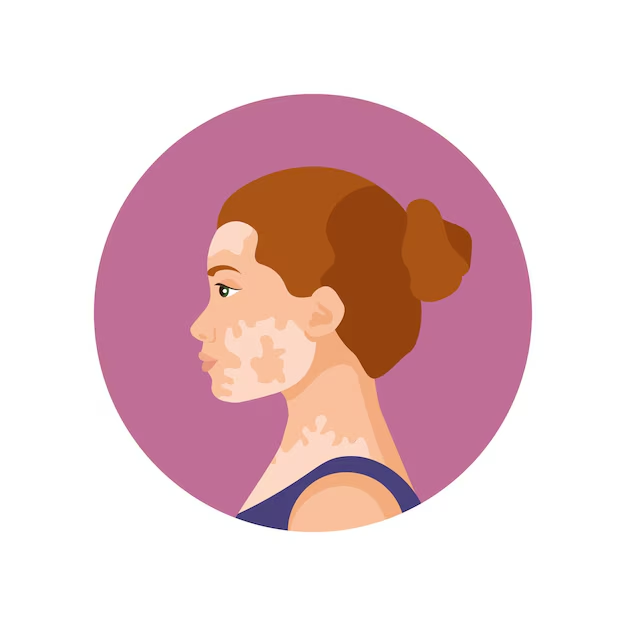What Causes It?
Autoimmune disorder - The immune system mistakenly attacks and destroys melanocytes.
Genetic factors - Family history increases risk, with about 30% of cases being familial.
Neural factors - Nerve endings might release chemicals toxic to melanocytes.
Self-destruction of melanocytes - Melanocytes might destroy themselves due to defects.
Oxidative stress - Accumulation of toxic compounds called free radicals.
Triggering events - Sunburn, emotional stress, or injury to the skin (Koebner phenomenon).
Associated autoimmune diseases - Including thyroid disorders, pernicious anemia, Addison's disease, and diabetes.
Viral infections - Some research suggests a link between certain viral infections and vitiligo development.
Chemical exposure - Certain chemicals, particularly phenolic compounds found in some industrial products, may trigger vitiligo in susceptible individuals.
Signs & Symptoms
Patchy loss of skin color - Most common initial sign, typically appearing on sun-exposed areas like the hands, feet, arms, face, and lips.
Premature whitening or graying of hair - On the scalp, eyebrows, eyelashes, or beard.
Loss of color in the tissues inside the mouth and nose (mucous membranes).
Loss of or change in color of the inner layer of the eye (retina).
Patches that grow and change over time - Enlarging, changing shape, or appearing in new areas.
Cycles of pigment loss and stability - Periods of rapid progression followed by periods with little change.
Itching or discomfort - Occasionally reported before or during development of new patches.
Sunburn or increased sensitivity to sun - Due to lack of melanin protection in affected areas.
Symmetrical patches - Often appears on both sides of the body in a roughly symmetrical pattern.
Koebner phenomenon - Development of vitiligo patches at sites of skin trauma or injury.
